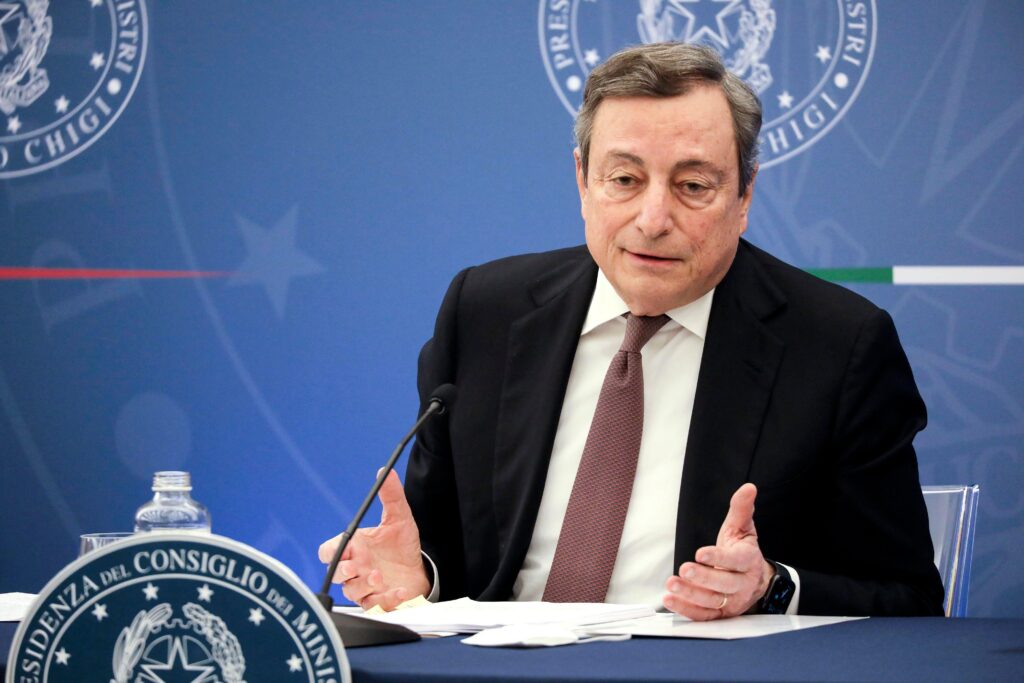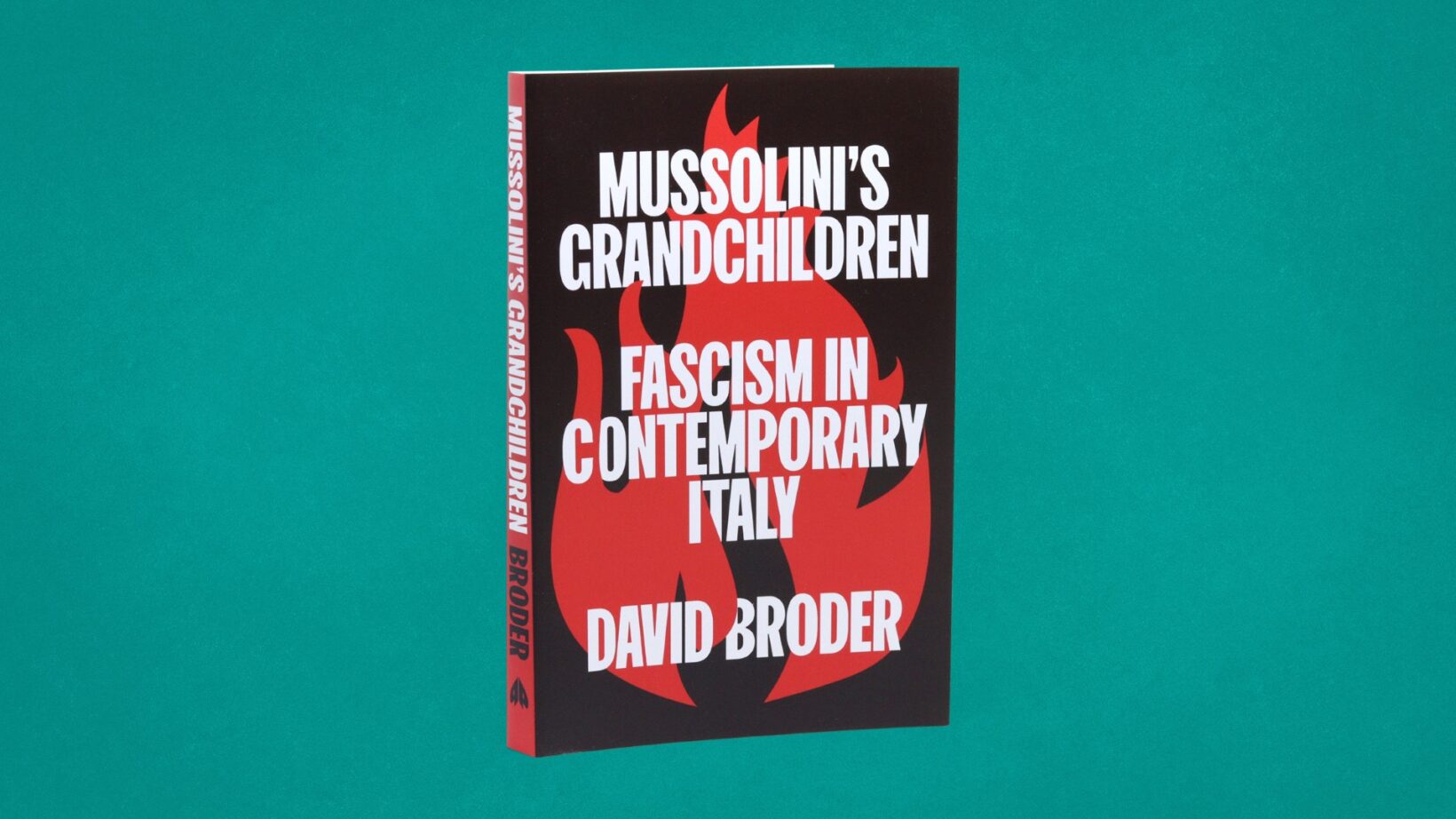In Weimar Italy, the boundaries between parliamentary republic and semi-presidentialism seem to fall at times, while technocrats run the show. How did we get here?

A parliamentary Republic, with an extremely polarised political arena, short-lived governments supported by conflictual party coalitions and in constant need of saving: this is how the history of the Italian Second Republic could be summarised.
The Second Republic rose from the ashes of the political chaos unleashed by the political corruption scandal of Mani Pulite (Clean Hands), which led to the dissolution of the political party system that had ruled the country since 1948.
That chaos led to two political outcomes destined to condition the whole course of the Second Republic: the emergence of a new typology of government, the technocratic government, in 1993 (led by former governor of the Bank of Italy and future President of the Republic Carlo Azeglio Ciampi) as well as the political rise of media tycoon Silvio Berlusconi in 1994.
The label technocratic is applied when a Prime Minister is a figure unaffiliated with any party, with a strong “technical” financial background and authority and is appointed by the President of the Italian Republic to form a government that would generally have some very specific targets, aimed at developing reforms and cutting public spending and whose government could include independent ministers, as well as representatives from the supporting coalition majority.
The reason why political outsiders can be appointed to the office of Prime Minister has to do with the role and the authority of the President of the Italian Republic, who, according to Article 92 of the Italian Constitution “nominates the Italian Prime Minister” as well as the ministers, following the Prime Minister’s proposals.
After 1994, following the fall of the first Berlusconi government, yet another technocratic administration ascended in the person of Lamberto Dini, former Director of the Bank of Italy.
As Dini was an independent figure and the Treasury Ministry of the fallen government, President Oscar Luigi Scalfaro identified him as the PM who could be supported by a large and diverse parliamentary majority.
When the third Berlusconi government fell, in 2011, under the pressure of the Troika and international markets’ distrust, the former European Commissioner for Competition and President of the Bocconi University, Mario Monti was then appointed by President Giorgio Napolitano as the new PM.
The fall of governments is always the genesis for the rise of technocratic governments, and when it comes to the rise of Mario Draghi, the same handbook was applied, with former PM Matteo Renzi as its main author in this case.
All these governments, from Ciampi to Draghi share some common features: the exceptional conditions which generate them, a volatile and polarised political arena, the focus on introducing austerity measures, keeping fiscal stability as a North Star, an initial positive attitude towards social partnership with trade unions and employers organisations ( an attitude lost by both the Monti and the Draghi governments so far), as well as an overwhelming positive treatment by mainstream media and support from the country’s elites.
As Parliament readies to elect the thirteenth President of the Italian Republic, two figures appear as prominent as successors to Sergio Mattarella, Mario Draghi and the omnipresent Silvio Berlusconi, with his desire to coronate what he and his circle and supporters see as a prominent statesman career.
While Berlusconi is already losing support within the centre-right parties, Mario Draghi stands on the sidelines.
What is certain is that the election of either of them would create political and constitutional crises potentially unheard of before.
Marco Damilano, editor of the Italian weekly L’ Espresso is the author and narrator of a podcast called “Romanzo Quirinale” (Quirinale: A Novel), in which he explores the history of some of the Presidents of the Italian Republic.
Some of the features that Damilano highlights are the previously mentioned party-political polarisation and instability, as well a desire of some Italian Presidents of following in the footsteps of Charles De Gaulle and changing the structure of the Republic towards a presidential one.
This desire and these attempts have been frustrated several times, as that would have also led to significant constitutional change, something that the Italian electorate keeps on being very opposed to, as the result of most referendums of constitutional nature prove.
However, while these attempts have been unsuccessful, it can be said that, on many occasions, Italy has shifted towards a Weimar-style semi-presidential architecture, a shift that has often been encouraged by a weak party system and that has been mostly embodied by former President Giorgio Napolitano, which was labelled as “Re Giorgio”, King George for appointing Mario Monti as PM and for his centrality during his time in office.
Mattarella may have appeared as less central compared to Napolitano, but if we look at how he influenced the composition of the first Conte government ( a Five Stars Movement and League coalition ), as well as how he managed the confusion which followed its fall and the one of the Italian lawyer’s second government, it can be said that his role has been an involved and central one.
All the technocratic governments of the Second Republic have been an expression of overriding presidential authority, supported by a large majority across different and opposing parties and presented as focused on notions of the common good, national and European interest, a departure from the not unfounded narrative of litigious and self-absorbed Italian political parties.
In 2011, the European external constraint had to with international markets and financial instability, as well as the watchful eye of the continental members of the Troika, the European Commission and the European Central Bank; the latter addressed a letter to Silvio Berlusconi’s government, demanding reforms and fiscal cuts and it was co-signed by the then President, Jean Claude-Trichet and his designated successor, Mario Draghi.
Eleven years later, Berlusconi and Draghi’s paths meet again for the race to the top Italian office.
Silvio Berlusconi can count on the mobilisation of his media empire, which has been crucial in the support that he maintained for almost two decades and his current residual influence, but Mario Draghi can count on the overwhelming support of Italian media.
The applause that followed Draghi as he met journalists for his last conference of the year, in 2021 is proof of this, but also an epitome of the lack of checks and balances between the political power and the fourth estate in the country, a problem that has also historical reasons given the fact that Italian newspapers were mainly born as political parties’ house organs.
The oldest national newspapers in the country, like the Corriere Della Sera and La Stampa, as well as Repubblica, founded in 1976, seem to be in constant awe of Mario Draghi and his government (who is also labelled as Super Mario for his role in saving the Euro and his famous quote ‘Whatever it takes’), while criticism and scrutiny can be found among the pages of Il Manifesto (historic Italian communist newspaper), Il Fatto Quotidiano and Domani, founded by Repubblica’s former owner, Mario De Benedetti and by radios like Radio Popolare.
A crucial factor here is media ownership, as, in a way not too different from the UK, Italian media are mainly owned by a few groups, like RCS Media Group, which owns the Corriere and whose CEO, Urbano Cairo, also owns the TV channel LA7, the previously mentioned Berlusconi media empire ( with the Mediaset channels, as well as the daily Il Giornale), the confederation of Italian industry Confindustria (which owns the financial newspaper Il Sole 24Ore) and finally the editorial group GEDI, which includes Repubblica, La Stampa and several other media and whose parent company is Exor, owned by the Agnelli family.
Exor also owns The Economist which happens to have published an overwhelmingly positive judgement and vision of Italy, as the country of the year.
Most of the Italian media would welcome Mario Draghi at the Quirinale, but this would lead to the fall of the government, at a time where the Recovery and Resilience Plan has to be implemented and with the risks associated with a potential election during the pandemic, or it could also lead to a constitutional crisis.
If Draghi would try to install a substitute, like the Minister of Economy and Finance Maurizio Franco or Minister of Justice Marta Cartabia, this could create a sort of semi-presidential chaos, as while the President of the Republic has a role, he or she cannot influence the direct action of the government.
A Berlusconi presidency would be ruinous for a variety of reasons and one of those, beyond a history of corruption is quite striking: he would also become the leader of the Italian judiciary, something that is unthinkable, given his notorious contempt towards Italian magistrates and his history of defending himself not during trials, but from trials altogether, through his famous “leggi ad personam”, “personal laws”.
On top of that, he is also, undoubtedly, the most polarising political figure in the country of the last thirty years.
The recent withdrawal of support for Berlusconi of the League’s leader Matteo Salvini complicates the Quirinale run for the former PM and he is likely to leave the race, while a second mandate for Sergio Mattarella, which is an opinion embraced by some political forces has been dismissed by Mattarella himself, who seems to be wary of following the only precedent, which saw Napolitano returning to the Quirinale for two years, from 2013 to 2015.
As 2021 was as a successful year for Italy in many international fields, with triumphs in Eurovision, Euro 2020 and successes at Tokyo’s Olympics and Paralympics many mentioned a “Draghi effect”.
It is important to say that, 11 years ago, Mario Monti was welcomed with similar enthusiasm, but his attempt at continuing his political career were squashed in the 2013 country’s elections.
The Italian centrist forces, whose main leaders are Matteo Renzi and former Minister Carlo Calenda have the aim of making their votes count in the Quirinale run, while the Democratic Party and the Five Stars Movement have not yet expressed strong names for the run, possibly also not to “burn” their candidates.
What is certain is that Mario Draghi’s agenda is unsurprisingly proving to be anything but progressive and his election for the Quirinale would not be in the country’s best interest.
Also, technocratic governments are proving to be obsolete and partial in their policy, given the lack of interest in issues like the search for humane approaches to migration, the promotion of LGBTQ+ rights and citizenship rights for over one million Italians who are currently in a Limbo.
Another negative element is that these governments are attachment to economic practices that have run their course even in former neoliberal dreamlands on both sides of the Atlantic, where the Big State is back even under the Conservatives, as the sociologist and political theorist Paolo Gerbaudo observed.
With four governments of this nature over 29 years, a constant technocratic Deus Ex Machina emergency approach, to placate Europe or the international markets can only be applied as a temporary measure, a sort of band-aid, but it should never become a model for long-term policy.
In addition to that, as Monti’s political delusion proved and despite the hopes of centrists Matteo Renzi, Carlo Calenda and the rest of the Italian centrist forces who would welcome a return of Draghi as Prime Minister after 2023, as well as the hopes of several liberal centrists commentators, there is no real electoral appetite for a centrist political force.
While technocratic governments are painted as post-ideological, they are everything but that, as it is in this nature to recycle centrist, soft or hard neoliberal policies which are growing increasingly unpopular; awarding Draghi, the new herald of this model with the Italian presidency and unleashing the connected constitutional-political crisis is a risk just not worth taking.
Angelo Boccato is a London-based freelance journalist and co-host of the podcast Post Brexit News Explosion. He tweets @Ang_Bok.





